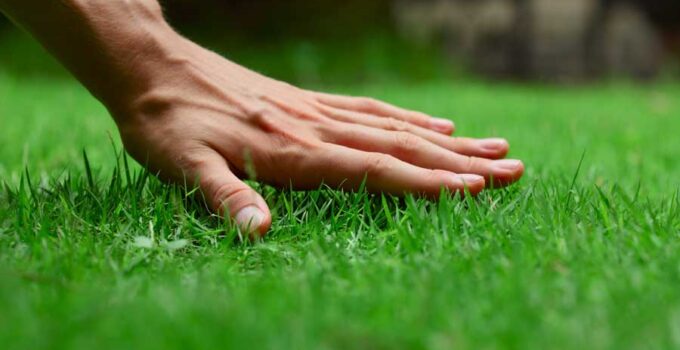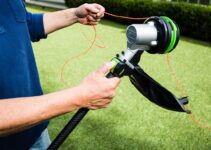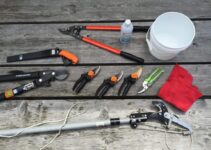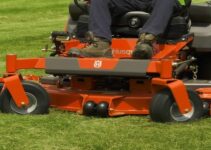Someone explains his/her feeling very beautifully through a quote that revealed that a person feels safe when he/she is around the greenery and water.
I agree with this because I feel the same when I surrounded by greenery. It makes me feel fresh. People love to plant, and yes, this article is absolutely for you if you are one of such people.
Usually, when it comes to make your lawn or garden lush green, you do not know
Table of Contents
How Much Grass Seed Do I Need To Put Down?
I will help you to know the answer in this article further. The most initial step is to be known to the accurate measurement of the area you want to plant. After calculating it, you need some instructions to follow. Your lawn will give you lush green exposure.
There are two types of grass, warm-season grass, and cool-season hemp. Warm-season grass is found in the south region and prefers growing in hot weather. On the contrary north area, grass grew in cold weather and located in northern places in the world.
Some warm-season grasses are Bermuda, Zoysia, Augustine, etc. Some cool-season grasses are Kentucky, Ryegrass, Fescue, Bluegrass, etc. Maybe you have heard these names before.
Planting grass seed in the ground is easy because people who plant in ground have great experience. But usually, people who are going to perform this task at home get confused. To resolve your confusion, I am writing this article. I hope it may help you.
Do not wait for your gardener to make your lawn beautiful once again if you have not ever planted grass seed in your lawn experience it now and follow the article.
Following are the main steps which will help you to know the amount of grass seed required:
1: Right Time to Plant
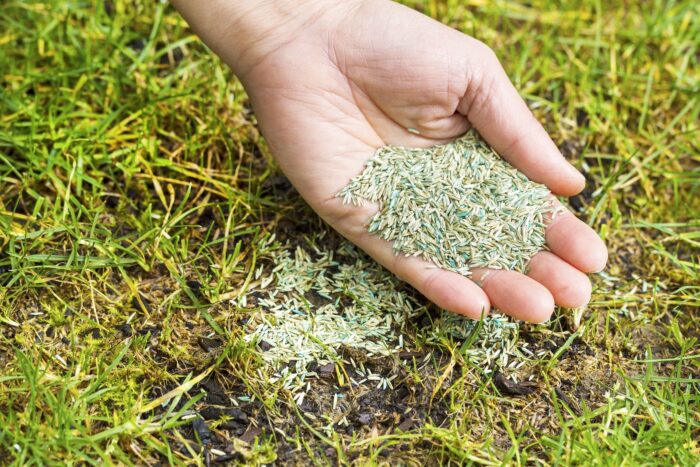
The essential step is to wait for the right time of the year to plant grass seed. If you are aware of the best time for planting your region, then it helps a lot in growing healthy grass.
Its growth rates depend upon your growing region, climate, and the kind of grass you are growing.
2: Area Measurement
If you know the exact measurement in terms of square per feet of the area you have selected to plant. Then it is an easy game, but if you have no idea, then you must measure it accurately.
You have to be very accurate while measuring because grass seeds quantity is dependent on the area per square feet. If you buy the grass seeds more than the requirement because of the wrong measurement, you will face a significant loss because some grass seeds are expensive enough.
Try to measure the area manually and correctly. After doing this, proceed towards the next step.
The question which should appear on your mind after the measurement is about the calculation that How do I calculate how much grass seed do I need?
Here I have a solution. Measure the length and width and get their product to find the area per square meter. Finally, multiply the city and 0.03 kg to get the exact figure which guides you that how much seed is required.
3: Seed Selection
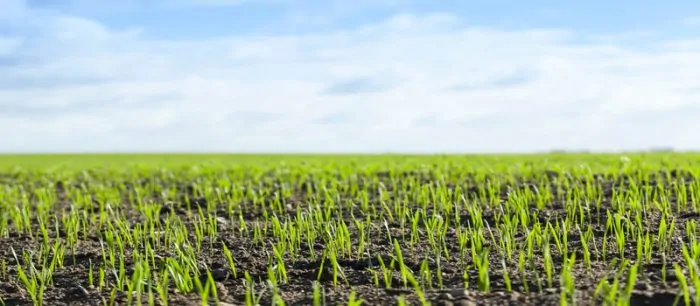
Now you have to select the grass seed for your garden or wherever you are planting. Selection should base on local conditions and your region. Which seed is good to plant in your garden you must know that.
You should know which grass should you prefer a cold season or warm season. If you have no idea how to select a seed, then go for expert advice. The lawn should get proper natural advantage from your soil and location.
Some factors which are essential while seed selection is:
- Soil type
- Climatic conditions
- Soil fertility
- Shady locations
- slope
4: Buy Grass Seed
After selecting the most suitable speed for your lawn, the next step is to buy the chosen grass seed in the required quantity.
Few types of research have proved that usually, people ask one most common question to shopkeeper whiling buying grass seed. The problem is how much area does a 50lb bag of grass seed cover?
So if you are reading my article, I would love to share this that you should not ask this question to a shopkeeper because of every detail and per area coverage mentioned in that bag.
Label varies with the type of grass, for example, if we talk about fescue, it is recommended about 6 to 8lb per 1000 square feet. Kentucky suggested as 1.5 to 2lb per 1000 feet. It depends on your grass type.
If you are seeding for a new lawn, then you should buy twice to the suggested quantity because it takes twice as compared to the existing garden in overseeding. For amending your former lawn suggested amount will work.
5: Prepare the Area for Planting
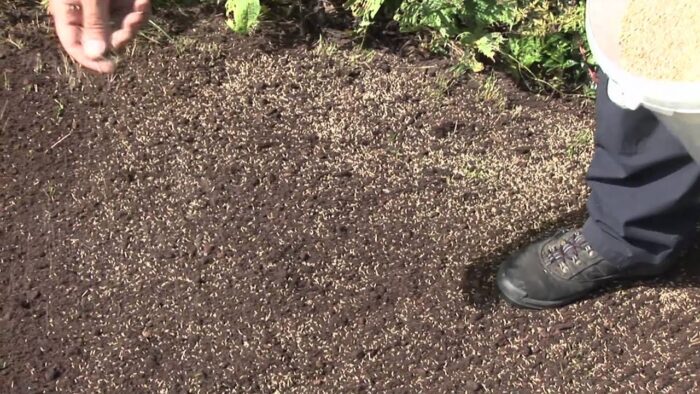
Before planting, you must clear the area from weed. If you can still find it on the field, pull it up. Now dig the locality where you are going to plant grass seed. Remove rocks, roots, stems if you come across these while digging. It loosens the soil and breaks up clumps. Use a rake now to spread soil on a freshly tilted area.
Try to make the surface smooth with the help of rake. For ideal soil structure, amend the soil with organic matter. Try to maintain the standard pH of the soil, which is 6.0 to 7.5. To decrease pH use Sulfur with a rake and to increase amend the soil with lime.
6: Starter Fertilizers
Everybody wants to see a plant which he/she is planting to be very fresh looking. After seed covering move towards to next step that is spreading the fertilizers for extra effectiveness.
Feeding of grass should be done on the same day of seeding. Fertilizers help for grass’ nutrients. Now there are so many good brands of fertilizers available which helps you in selecting a good quality grass. Fertilizers have phosphorous in there which allows the seeds to grow. Try to choose a good quality fertilizer.
By using a spreader or your hand, spread the fertilizers all over the area. A spreader used for large areas. Do not forget to read the manual or instructions given by the manufacturer, which helps in selecting the correct amount for the land you are sowing.
7: Planting Seed
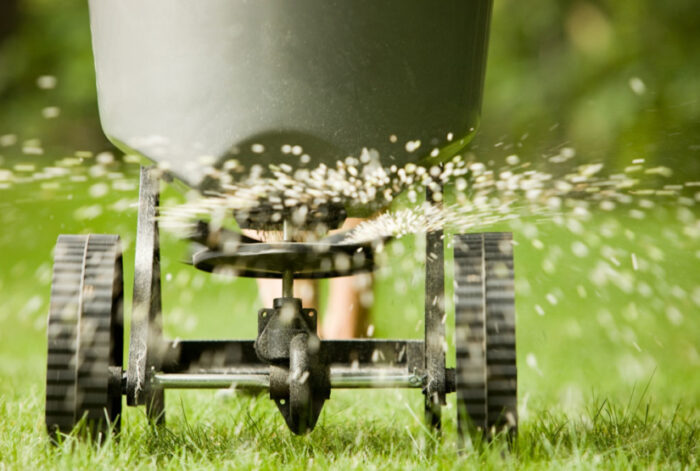
Now, after all these steps proceed towards planting grass seed. Spread the seeds by hand in small areas. Use a spreader or mechanical seeder to spread seeds in large cities.
Do not forget that the spreading of seeds must be done evenly. Do not put the seeds too close; it causes seeding to fight for space and the same nutrients. It affects the grass in these areas. Try to utilize 16 seeds per square inch.
Select higher quality seed because it is more beneficial then cheap quality seeds. Low-quality seeds may consume more time and effort and still, the result is not satisfactory enough.
8: Covering Seed
It is essential to cover the planted seeds. It is not necessary, but it will help to retain the moisture and hold the seed in place.
Cover the seeds lightly with a rake. Expert suggests that burry the seeds about a quarter of an inch into the soil which will give them space to grow freely.
If you burry it more in-depth, it will stop them from germinating. After burying gently use a roller on that area to pack down the soil. It helps the seeds to be planted firmly.
9: Watering Seed
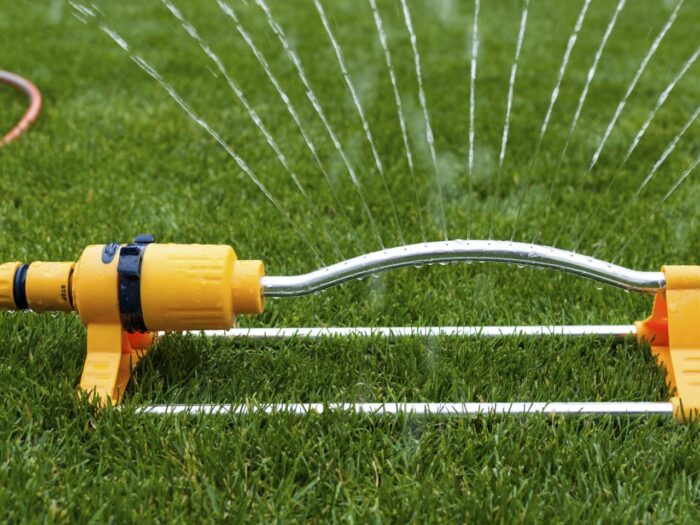
Water is an essential need of human beings. But water is equally necessary for plants as well. Right after planting seeds what you have to do is watering. Pool the area where you just planted the seeds by using a fan-spray sprinkler or an oscillating sprinkler.
You cannot use pipe for watering in this step because pipe busts out water and you need little water sprinkling. Check the area properly that water should have reached to every corner. If any area remains dry, water it. All the above steps are equally important, but watering is essential as planting based on water.
10: Water Seed Again
Initially, pool the area 3 times a day and each time for 10 minutes. Watering should not exceed this because it may erode the soil and seed can be washed out.
As you find, small green sprouts are growing, reduce the watering to 20 minutes per day for only one time.
Try to water the area when evaporation from the sun is less. The best time to water plant is early morning.
11: How It Looks
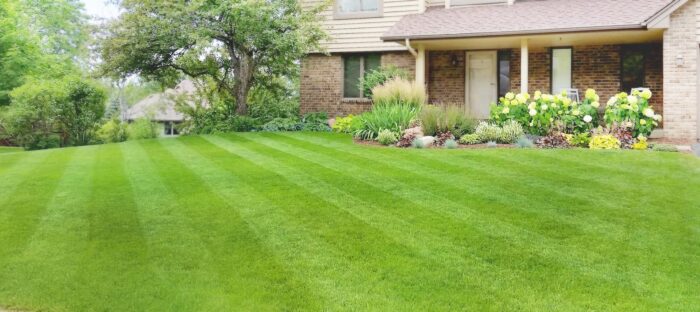
After taking some time grass seedlings root well and settle down. Every kind of alteration to your lawn takes time whether it is overseeding, repairing barefoot, altering old parks, or planting a new garden. In all these processes grass seeds take seven to twenty-one days to grow appropriately. It is the minimum time expected maybe it takes 3 to 4 weeks extra before mow process.
How it will look is dependent upon the category of grass and your region. If the result is according to your expectations, then you must be happy.
The best time to mow spring is the first mow.
Above are some necessary steps which may help you to plant your small lawn. But still, most of you are thinking that I have not answered the most asked question when it comes to planting that is how much grass seed do I need for one acre? So, here I am answering the question below.
The answers are totally calculation based. Try to calculate with the help of a calculator because manually you can make a risky mistake.
First, you should know that how much square feet does one acre contains. One acre is equal to 43,560 square feet divide 1000 square feet, and the answer will be 43.56. After this multiply the response we got with the pounds of grass seed for every 1000 square feet. You can get the rough figure which tells the amount of grass seed needed per acre.
Final Words
Greenery is a source of refreshment. Beautiful gardens always please us. Some of you also love to surround the plants. If you want to make your garden or lawn beautiful, this article of mine How Much Grass Seed Do I Need will surely help you out.
I have tried to explain all the essential steps involved in planting grass seed. Grass in lawn gives kids and pets a comfortable and fresh place to play. There are so many different methods to grow weed, but if you do this by using grass seed, it will be cost-effective. That is why I have described the process according to the grass seed.
Follow the steps in my article as instructed and share your results by giving me your feedback. Your feedback will always be appreciated.
